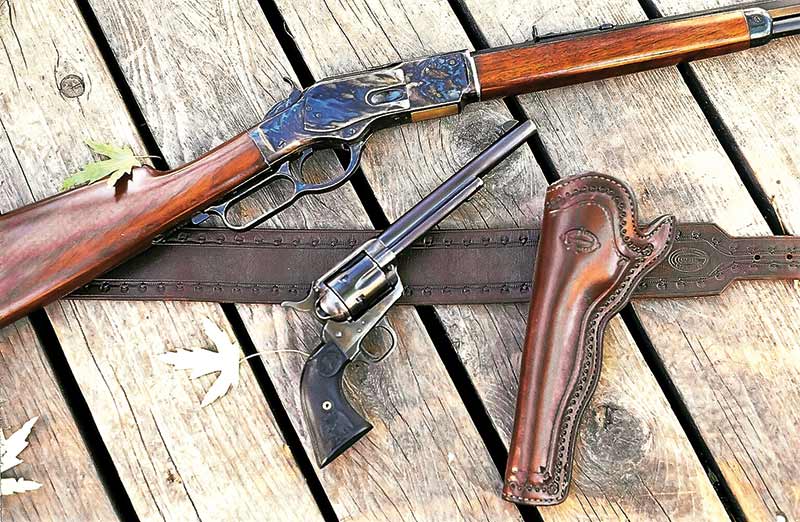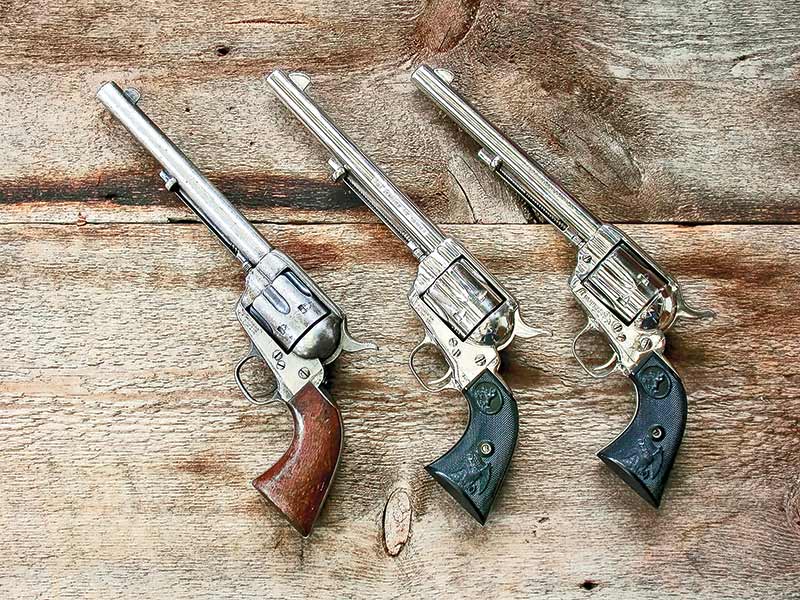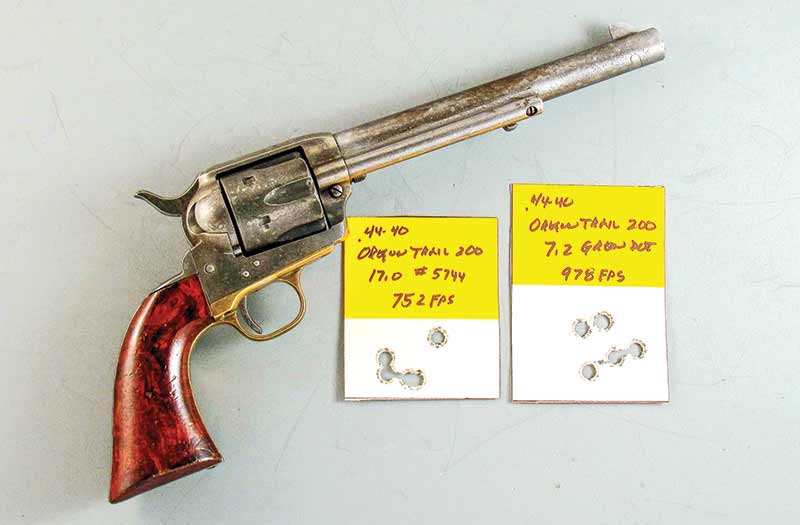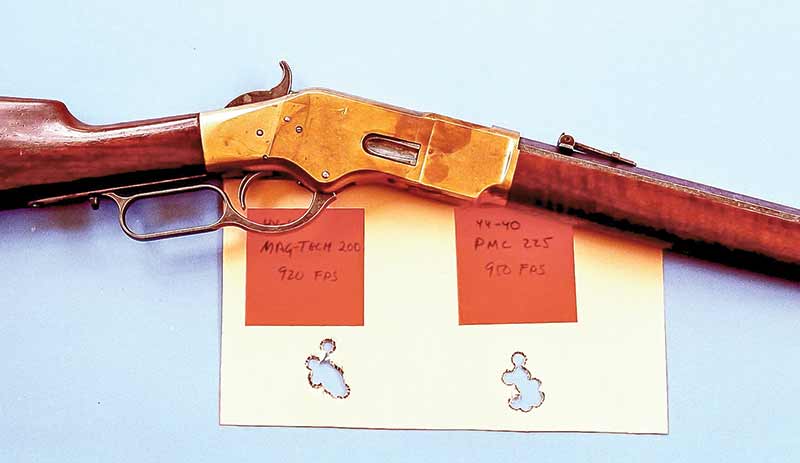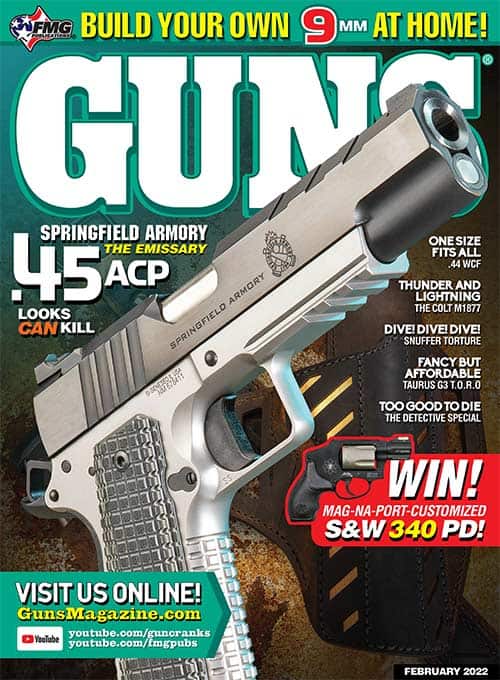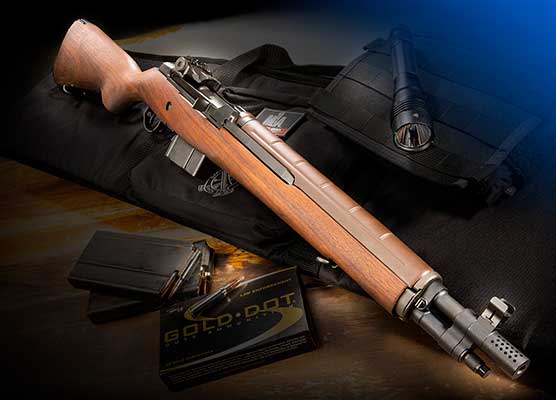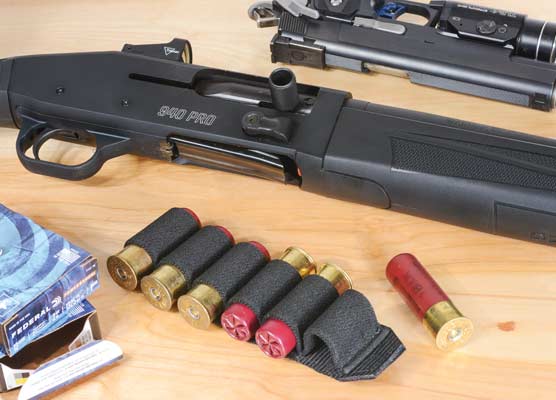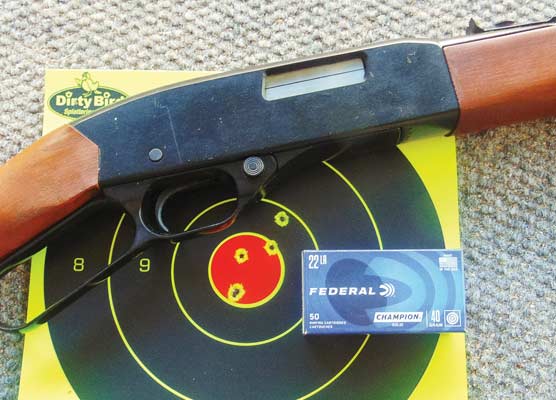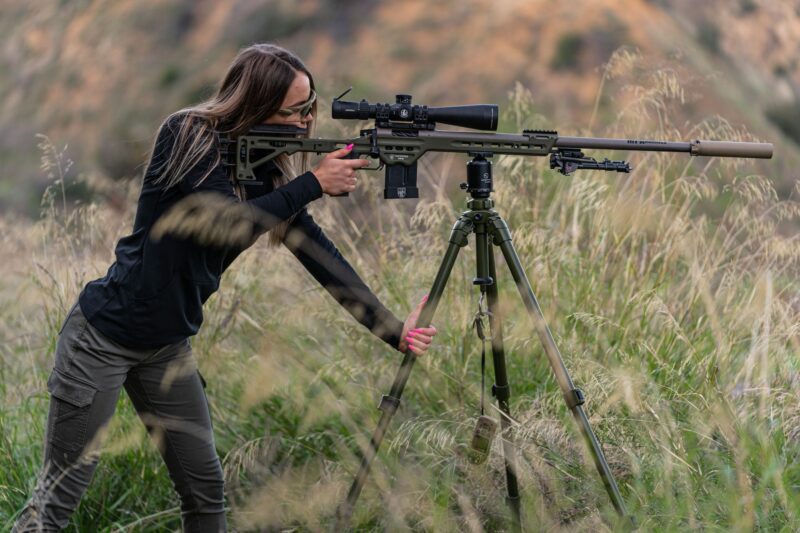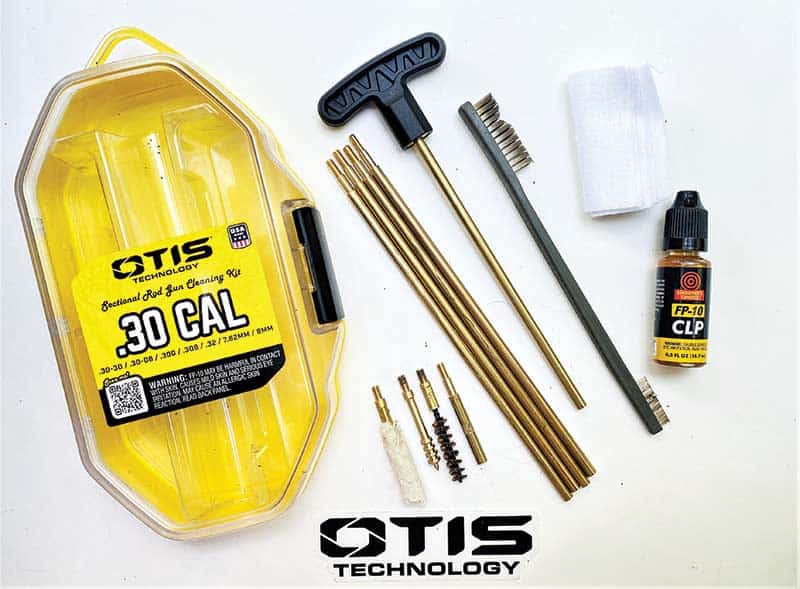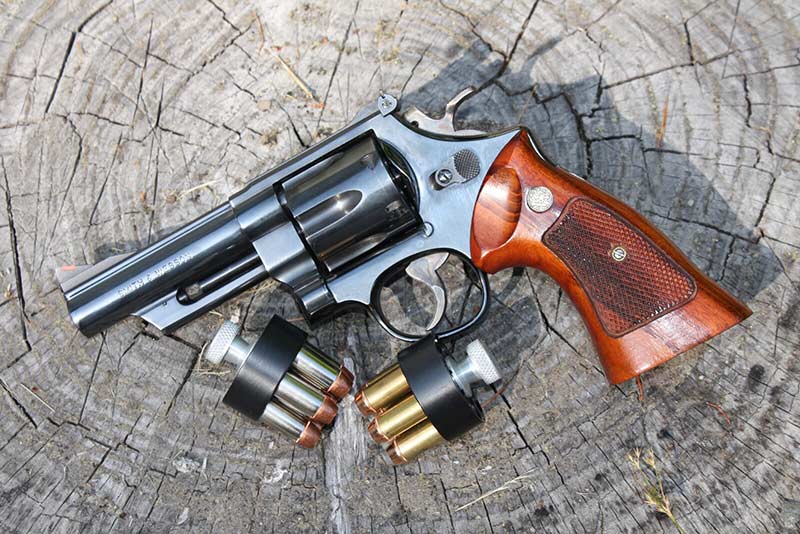The .44 WCF Or .44-40
A Rose By Any Other Name
The first successful repeating lever-action rifle was the 1860 Henry. B. Tyler Henry was Oliver Winchester’s shop foreman at New Haven Arms and the Henry rifle used a .44 Rimfire cartridge known as the .44 Henry. Even today, Winchester .22 Rimfire cartridges have an “H” head stamp for Henry. However, in 1860 Winchester didn’t know if he wanted to put his name on the new endeavor. It proved successful enough that the next version was known as the 1866 Winchester. The 1860 loaded from the front of the magazine somewhat like today’s .22 rifles while the 1866 was improved using King’s patent for a loading gate on the side of the receiver, and it also received a forearm which the 1860 Henry did not possess.
The third improvement in these early Winchesters came in 1873 when the brass receiver changed to iron and then steel, and a new cartridge emerged. The .44 Rimfire was replaced by a Centerfire cartridge which was known as the .44 Winchester Centerfire (WCF). Today it is mostly referred to as the .44-40 and the Winchester 1873 is known in many circles as The Gun That Won The West.
Specs
The .44 WCF cartridge used an inside-lubricated bullet rather than the outside-lubricated bullet of the .44 Rimfire. Being a centerfire, the .44 WCF was not only reloadable but Winchester also marketed reloading tools. The case was lengthened to 1.3″ and instead of being a straight-walled .44 as others, the .44 WCF is a tapered case with a slight bottleneck. The .44 WCF in the Winchester 1873 arrived the same year as the .45 Colt in the Colt Single Action Army and it is very close to being a .45 case necked down to .44.This may have been done for greater case capacity or ease of chambering or both. Whatever the reason, the .44-40 is one of the all-time great cartridges. Original Winchester Model 1892 and Marlin 1894 lever guns were also offered in .44-40 and some experts tell us the “.44-40” designation came from the fact Marlin did not want to stamp “.44 Winchester” on their rifles.
When I started shooting seriously in the 1950s, levergun fanciers were grabbing up Model 1892s for conversions to both .357 and .44 Magnums and Arizona’s Ward Koozer did a brisk gunsmithing business with these conversions. These made excellent companions to the new magnum sixguns from Ruger, the .357 and .44 Blackhawks, but it seemed a shame to convert the grand .44-40s to the Magnum chambering. In addition to the above-mentioned lever guns a “Model 1892” emerged and sold for $39.95 in the 1950s. This was the El Tigre produced in South America under special licensing from Winchester. I have experience with only one El Tigre and it is an excellent rifle rivaling the quality of the real Model 1892. When I purchased my excellent example about 10 years ago it cost nearly 20 times what it did in the 1950s.
The Model 1892 would last until 1931 with over one million being manufactured. Just as with the Model 1873, the Model 1892 was available as a carbine with a 20″ barrel; rifle, 24″; and a musket, 30″. The special options of the Model 1873 carried over into the 1892 with both round and octagonal barrels offered, several styles of sights, standard walnut or fancy grade stocks and crescent or shotgun style butt plates.
I now have two early Winchester 92s, the El Tigre and an original, both chambered in .44 WCF. I might mention the El Tigre was built as a military rifle and as such has a 22″ barrel, sling swivels and a ladder-type rear sight. I don’t think I will be shooting it out to the 1,000 yards marked on the rear sight. Interestingly, the El Tigre outshoots the Winchester. The four .44 Winchesters — 1860, 1866, 1873 and 1892 — are all an important part of our nation’s firearms history. The 1873 may have been the Gun That Won The West, however, the 1892 is just about the handiest rifle ever made. Think of it as a Perfect Packin’ Pistol in rifle form.
Kissin’ Cousins
Someone at Colt apparently took a good look at the .44-40 cartridge and realized the cartridge case for the .44 WCF at a length of 1.300″ was awfully close to the 1.285″ of the .45 Colt and users of Winchester 1873s would probably be very interested in having a sixgun using the same ammunition. It appears the first .44 WCF-chambered Colt Single Action arrived in 1878. Those Colt Single Actions chambered in .44-40 or .44 WCF or .44 Winchester Centerfire, as preferred, were simply marked on the barrel with “COLT FRONTIER SIX SHOOTER”; when the Bisley Model of 1896 was so chambered “(BISLEY MODEL)” was added in front of the above inscription, and by 1923 .44-40 had been added behind the same inscription on the Single Action Army. Of the approximately 357,000 Colt Single Action Army sixguns produced from 1873 to 1941, approximately 150,000 were .45 Colts and about 71,000 were chambered in .44-40.
Colt also chambered their Model of 1878 in .44-40. The 1878 was Colt’s first big-bore double-action sixgun and except for the double-action mechanism and Smith & Wesson-style grip frame, the Model of 1878 operated the same as the Single Action for loading and unloading — that is, it had a loading gate and an ejector rod. Barrels were marked the same as on the Single Action Army. In the late 1890s Colt would introduce the swing-out cylinder, double-action New Service revolver and this would also be chambered in .44-40.
Three years after Colt introduced their double-action Model of 1878, Smith & Wesson countered with their Double Action First Model and then followed with the .44 Double Action Frontier in 1886. Chambered in .44-40, the Double Action Frontier would last until just over 15,000 were manufactured by 1913. As with all other Smith & Wesson frontier revolvers, these are black powder guns with the frames made before 1900. Remington introduced their big-bore single action revolver as the Model 1875 chambered in .44 Remington and then in 1879 added the .44-40 chambering. When the Remington Model 1890 arrived without the characteristic web under the barrel found on the 1875, it was chambered only in .44-40.
Today
While the .44-40 chambering was a significant cartridge offered in Colt Single Actions as well as their Model 1878 and New Service double action sixguns prior to WWII, it has not been so widely offered in post-War guns. The so-called 2nd Generation Colt Single Actions arrived in the mid-1950s and the only ones chambered in .44-40 were those offered in the Peacemaker Centennial Commemorative set with a 7-1/2″ barrel .45 Colt blued or case-colored and the .44-40 in a nickel-plated Frontier Six Shooter with the same barrel length. The 3rd Generation Colts arrived in the mid-1970s and since then both the Single Action Army and the New Frontier were both offered in .44-40.
Colt Single Actions chambered in .44 Special use the same barrel dimensions as found in the .44-40 Colts so it is no problem to add .44-40 cylinders to .44 Special Colt Single Actions. Today most .44-40 Single Actions are found in Uberti replicas from Cimarron.
Smith & Wesson chambered the .44-40 in their New Model #3 but only rarely and then it was chambered in the .44 Double Action Frontier in 1882. The .44 Special Triple-Lock was very rarely chambered in .44-40 on special order only. In more modern times Smith & Wesson offered their Wagon Train Commemorative in .44-40. Ruger produced a few .44 Magnum Super Blackhawks with an extra .44-40 cylinder and the original Vaquero was also offered in .44-40.
The .44-40 cartridge normally has a 200-grain bullet while the .44 Special has pretty much been standardized with a 250-grain bullet. This can be a problem with fixed sighted sixguns, however, the adjustable sighted New Frontier solves the problem of two different weight bullets having different points of impact.
